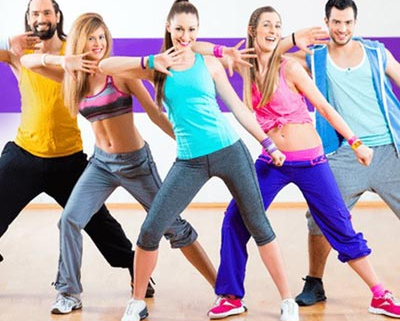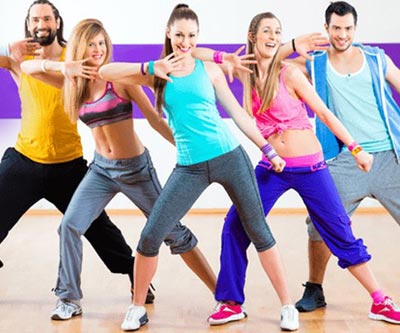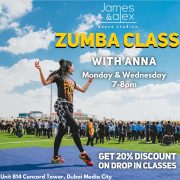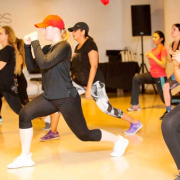The Power of Dance Fitness: Unlocking Your Best Self with Zumba Classes
In today’s hectic world, finding a workout routine that’s fun, effective, and sustainable can feel like a quest. So many give up on traditional workouts because they’re too monotonous, boring, or lonely. But what if you had the ability to turn exercise into something you look forward to doing? Zumba classes and dance fitness accomplish just that.
In this article, we will explore the many benefits of dance-based exercise, illustrate how zumba classes fit into the picture, and give you tips to get you moving (or take your routine to the next level).
Why Dance Fitness Works Better Than You Think
When “dance” is mentioned, people think of performances or parties—absolutely not a workout. Dance fitness bridges that gap by combining cardio, strength, flexibility, and fun. Here’s why it succeeds:
- Full-body engagement: Movements in dance classes often involve the core, legs, arms, and balance muscles, giving you a more comprehensive workout than isolated gym machines.
- Cardiovascular boost: The constant motion and rhythm keep your heart rate elevated, improving endurance and promoting calorie burn.
- Mental health gains: Music, rhythm, and expressive movement reduce stress, elevate mood, and support mental clarity.
- Sociability and accountability: Dancing in a studio or group environment encourages consistency—people tend to stick with classes when there’s community.
- Skill progression: Unlike repetitive cardio machines, dance fitness challenges your brain too—with new routines, coordination, and musicality.
Due to these advantages, dance fitness is rising to the top as the ultimate option for those who desire permanent results and fun.
Spotlight on Zumba: What Sets It Apart
Though there are various formats of dance fitness, zumba dance classes in Dubai are distinct because they’re easy to access, high-energy, and based on Latin beats. Following are some reasons why:
- Zumba combines cardio intervals with dance genres such as salsa, merengue, reggaeton, and cumbia.
- It invites you to release and move your body, even if you do not “dance well.”
- Structure tends to be modular ebbs and flows of greater intensity interspersed with softer recovery movement.
- Instructors often add spice, direction, and mix-ins for all levels of fitness.
In a single 45–60 minute Zumba session, participants can lose 300–600 calories (intensity dependent), and enhance coordination and mood. Due to its popularity, Zumba also seems to attract a broader range of participants from total beginners to more experienced movers.
How to Choose the Right Dance Fitness Program
Before you register for a dance fitness class, it’s good to think through a few important considerations. Use this checklist to help make your decision:
| Factor | Why It Matters | What to Look For |
| Instructor credentials | Good instructors make the class more effective and safer | Certifications, years of teaching, student reviews |
| Class structure & variety | Keeps you engaged and progressing | Warm up + main routine + cooldown segments |
| Music & style | Aligns with your tastes and energy levels | Latin, pop, world rhythms, instrumentals |
| Intensity level | Ensures challenge without injury | Beginner, intermediate, advanced classes |
| Class size & environment | Influences comfort, individual attention | Smaller classes allow feedback; good audio/ventilation |
A good dance fitness program allows you space to expand—beginning slowly, then adding complexity, intensity, and creative flair along the way.
Five Variations of Dance Fitness to Try
To maintain your fitness experience, think about trying these dance-based formats:
- Zumba (Latin / Global rhythms) — high-energy, easy to learn, excellent cardio
- Hip Hop / Street Dance Fitness — edgier, groove-oriented, contemporary beats
- Latin Cardio (Salsa/Bachata fusion) — emphasis on Latin footwork + rhythm
- ** Afrobeat / Dancehall Fitness** — rich in percussive energy and flow
- Contemporary / Fusion Cardio — expressive, creative, less structured choreography
Each variation provides a slightly different training stimulus—rhythmic focus, muscular recruitment, or coordination challenge.
Getting the Best Results from Your Zumba / Dance Fitness Routine
Here are some useful tips to ensure your dance fitness workout is worth it:
- Warm up and cool down properly: Dynamic stretches prior to class; stretching afterwards to alleviate soreness.
- Wear proper gear: Supportive dance shoes, lightweight attire, sweat towel, and hydration.
- Be consistent: At least 2–3 times a week of class attendance to notice increased stamina, strength, and technique.
- Mix intensities: Taking breaks with high-energy Zumba by alternating with lower-impact dance style or resting days.
- Record or mirror: Observing your movements (in front of a mirror or through video) can help recognize posture or alignment problems.
- Stay patient: Coordination takes time don’t panic if you fall behind at first. Improvement gathers pace with persistence.
- Engage socially: Chat, move in pairs for moves, give feedback. The community keeps motivation going.
Common Challenges & How to Overcome Them
Even dance fitness lovers run into obstacles. Here’s what to do about them:
- Feeling self-conscious: Remember that all dancers were beginners once. Prioritize fun over perfection.
- Plateauing: Request more challenging variations from your teacher, or try cross-training with strength or flexibility workouts.
- Scheduling conflicts: Take shorter “express” dance classes or drop-ins when you can’t take full classes.
- Fatigue / soreness: Pace yourself. If you’re totally sore, have an active recovery day (like gentle dance, walking, or stretching).
- Injury risk: If you have problems with your joints, try low-impact choreography or talk to the instructor before class.
Sample Weekly Plan (For Reference)
Here’s an example routine mixing dance fitness types:
| Day | Workout | Notes |
| Monday | Zumba class (moderate) | Focus on learning key steps |
| Tuesday | Rest or gentle yoga | Let your body recover |
| Wednesdy | Hip Hop / street dance fitness | Add sharp isolations |
| Thursday | Strength-training + core work | Support muscular base |
| Friday | Zumba class (higher intensity) | Push cardiovascular limits |
| Saturday | Afrobeat / dancehall session | Embrace rhythm and flow |
| Sunday | Rest or light stretch / walk | Prepare for next cycle |
Modifying this according to your schedule and recovery guarantees steady progress without burnout.
Why James & Alex Should Consider Offering More Dance Fitness Options
As James & Alex already teach a diverse array of dance styles (salsa, bachata, ballet, hip hop, etc.), Jamesandalex.com, opening up or marketing their dance fitness offerings (such as specialty Zumba, Afrobeat, or dance cardio fusion classes) would:
- Recruit fitness-seeking students who may not necessarily think of dance
- Keep current students by providing more cross-training opportunities
- Strengthen the positioning of the studio as a dance & fitness destination for all spectrums
- Offer an entry point for newbies who then move on to performance classes
With the proper instruction team and promotion, James & Alex Dance Studio can become a go-to destination not only for dancers but for everyone interested in fitness.
Conclusion
Dance fitness, particularly zumba classes, provides an empowering, euphoric solution to conventional exercise. It incorporates body movement, cardiovascular training, mental stimulation, and social interaction.
Through practice with styles such as hip hop, Afrobeat, or fusion cardio, you can consistently challenge yourself and prevent plateaus. For studios like James & Alex, integrating and promoting dance fitness fits perfectly within their core business model and can lead to a wider clientele.
Ready to make your fitness experience one that you adore? James & Alex Dance Studios is the perfect place to take the first step or the next leap.
FAQs
1. Are Zumba classes beginner-friendly?
Yes, most Zumba classes are designed to be dance-friendly. Instructors often teach step-by-step, encouraging participants to follow along at their own pace.
2. How many calories can I burn in a Zumba class?
A typical 45–60 minute Zumba or dance fitness session can burn 300–600 calories, depending on intensity, your weight, and effort.
3. Do I need any dance experience to join?
No dance experience is necessary. The focus is cardio and movement not perfect technique. With time, your coordination and style will improve naturally.
4. Can dance fitness help build muscle tone or strength?
Indirectly, yes. The workouts utilize core, legs, and glutes, particularly when routines involve isolations, holds, or dynamic steps. Adding strength training improves outcomes.
5. How often should I attend classes to see results?
For noticeable gains in stamina, movement, and physique, consider 2–4 classes per week. Consistency is paramount.







Leave a Reply
Want to join the discussion?Feel free to contribute!